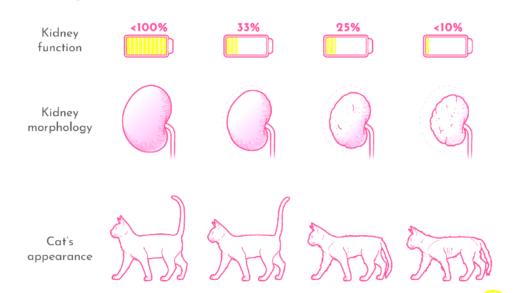Natural gas formation involves geological processes converting organic matter into hydrocarbons. Compared to coal and oil, natural gas is cleaner and more efficient but carries risks such as explosions and health hazards. Its impact on climate change is complex, with methane emissions potentially offsetting its benefits. Current trends show increased production and investment in infrastructure, while alternatives like renewable energy and hydrogen emerge as sustainable options.
How Natural Gas is Formed
Natural gas is primarily composed of methane, a compound formed through geological processes over millions of years. Its formation begins with the accumulation of organic matter, such as dead plants and animals, primarily in sedimentary basins. As layers of sediment build up over time, the pressure and heat transform this organic material into hydrocarbons.
- 1. Accumulation: Organic matter collects in anoxic environments, reducing decomposition.
- 2. Burial: Over time, sediment layers bury the organic matter.
- 3. Transformation: Increased heat and pressure convert organic matter into kerogen, and eventually into natural gas.
This transformation typically occurs at depths of 2,000 to 20,000 feet, where conditions are optimal. The resulting natural gas can migrate through porous rock formations until it becomes trapped by non-porous rocks, creating reservoirs. Understanding how natural gas is formed is crucial for evaluating its availability and sustainability as an energy resource.
Natural Gas vs Coal and Oil
When comparing natural gas with coal and oil, several factors come into play, including energy efficiency, emissions, and environmental impact. Natural gas burns cleaner than coal and oil, producing less carbon dioxide and fewer pollutants.
- Energy Efficiency: Natural gas has a higher energy content per unit than coal, providing more energy with less fuel.
- Emissions: Natural gas emits about 50% less CO2 than coal when combusted, making it a more attractive option in the fight against climate change.
- Environmental Impact: While coal mining can lead to severe land and water pollution, natural gas extraction, particularly through methods like fracking, poses risks to groundwater and air quality.
Ultimately, while natural gas is not without its environmental concerns, it offers significant advantages over coal and oil in terms of both efficiency and emissions.
Is Natural Gas a Clean Energy Source?
The question of whether natural gas is a clean energy source is a matter of ongoing debate. Proponents argue that it is a cleaner alternative to other fossil fuels, especially when considering its lower carbon emissions. However, critics point to the methane emissions associated with extraction and transportation, which are potent greenhouse gases.
- Pros: Lower emissions of sulfur dioxide and nitrogen oxides compared to coal and oil.
- Cons: Methane leaks during extraction and distribution can negate some of the climate benefits.
In conclusion, while natural gas may be cleaner than coal and oil, its classification as a clean energy source is complicated by methane emissions. Understanding these nuances is essential for policymakers and consumers alike.
Environmental Impacts of Natural Gas Extraction
Natural gas extraction has significant environmental impacts that require careful consideration. The drilling process, particularly methods like hydraulic fracturing (fracking), can lead to various ecological disturbances.
- Water Usage: Fracking consumes large quantities of water, which can strain local water resources.
- Contamination Risks: The chemicals used in fracking fluids can seep into groundwater, potentially impacting drinking water supplies.
- Habitat Disruption: Drilling sites can lead to habitat destruction for local wildlife, altering ecosystems.
- Air Quality: Emissions from drilling operations can contribute to air pollution, affecting both human health and the environment.
Assessing these environmental costs is essential for balancing energy needs with ecological preservation. The impacts of natural gas extraction not only affect immediate surroundings but also have broader implications for climate and health.
Natural Gas and Greenhouse Gas Emissions
Natural gas plays a complex role in greenhouse gas emissions. While it burns cleaner than coal and oil, producing less carbon dioxide, it is important to consider methane emissions during extraction and transportation.
- Methane Leakage: Methane is a potent greenhouse gas, and leaks can significantly offset the climate benefits of using natural gas.
- Lifecycle Emissions: Evaluating the full lifecycle emissions of natural gas, from extraction to consumption, provides a clearer picture of its climate impact.
- Regulatory Efforts: Stricter regulations on methane emissions can help mitigate the negative impacts of natural gas on climate change.
Understanding the relationship between natural gas usage and greenhouse gases is vital for informed energy policies and climate action strategies.
Advantages of Using Natural Gas
Natural gas offers several advantages that make it a compelling choice for energy production. Its benefits can influence both economic and environmental outcomes.
- Cost-Effectiveness: Natural gas is often cheaper than coal and oil, making it an attractive option for energy generation.
- Flexibility: Natural gas plants can quickly adjust output to meet demand, providing reliable energy even with fluctuating usage patterns.
- Lower Emissions: Compared to coal and oil, natural gas produces lower levels of harmful pollutants, contributing to cleaner air.
- Job Creation: The natural gas industry provides numerous jobs in extraction, transportation, and infrastructure development.
These practical advantages position natural gas as a key player in the transition to a more sustainable energy future, despite its environmental challenges.
Risks of Natural Gas
Natural gas poses several risks that must be acknowledged when considering its use as an energy source. The extraction and utilization of natural gas involve various dangers that can affect both the environment and human health.
- Explosions and Fires: Natural gas is highly flammable, and leaks can lead to devastating explosions. Proper safety protocols are essential to prevent accidents.
- Health Risks: Exposure to natural gas can lead to health issues such as headaches, dizziness, and respiratory problems. Prolonged exposure poses significant health risks.
- Environmental Risks: The extraction processes, especially fracking, can contaminate groundwater and harm local ecosystems. Methane leaks also contribute to greenhouse gas emissions.
- Infrastructure Vulnerability: Aging pipelines and infrastructure increase the risk of leaks and accidents, necessitating continuous monitoring and maintenance.
Recognizing these risks is crucial for making informed decisions regarding natural gas usage and its impact on safety and the environment.
Natural Gas and Climate Change
Natural gas significantly influences climate change dynamics. While it burns cleaner than coal and oil, the overall impact of natural gas on global warming is complex.
- Carbon Footprint: Natural gas combustion emits less carbon dioxide than coal, but the methane released during extraction and transport has a much higher global warming potential.
- Long-term Effects: If methane leaks are not controlled, they can offset the climate benefits of using natural gas instead of other fossil fuels.
- Regulatory Challenges: Addressing methane emissions through stricter regulations is essential for mitigating the climate impact of natural gas.
- Future Projections: The continued reliance on natural gas may hinder the transition to renewable energy sources if not managed effectively.
Understanding the relationship between natural gas consumption and climate change is vital for developing effective energy policies.
Current Trends in Natural Gas Production
The landscape of natural gas production is constantly evolving, with several trends shaping the market today.
- Increased Production: Advances in extraction technologies, such as horizontal drilling and fracking, have led to a surge in natural gas production.
- Global Demand: As countries seek cleaner energy alternatives, the demand for natural gas is rising, particularly in Asia and Europe.
- Investment in Infrastructure: New pipelines and export facilities are being developed to meet growing demand, especially for liquefied natural gas (LNG).
- Environmental Regulations: Stricter regulations on emissions are prompting companies to adopt cleaner practices in extraction and production.
Staying informed about these trends is essential for understanding the future of natural gas in the global energy market.
Environmentally Friendly Alternatives to Natural Gas
With increasing concerns over the environmental impact of natural gas, exploring alternatives is crucial for a sustainable energy future. Several options offer cleaner energy solutions.
- Renewable Energy: Solar, wind, and hydroelectric power are among the most promising alternatives that provide clean energy without greenhouse gas emissions.
- Biomass: Utilizing organic materials for energy can reduce reliance on fossil fuels while promoting waste recycling.
- Hydrogen: As a clean fuel, hydrogen can be produced from renewable sources and has the potential to replace natural gas in many applications.
- Energy Efficiency Measures: Enhancing energy efficiency in buildings and industries can reduce overall energy consumption, decreasing the need for natural gas.
Exploring these alternatives is essential for transitioning towards a sustainable energy system that minimizes environmental impact.





Comments are closed.